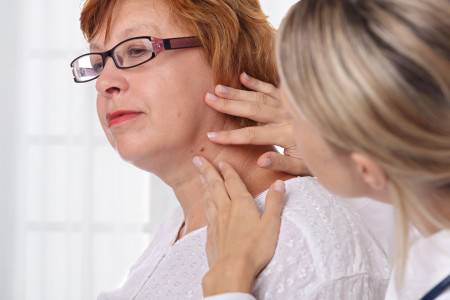Financial help for people who have skin cancer
Financial assistance may be available
If you cannot afford treatment for skin cancer, financial assistance may be available to help you get the medical care and medications you need.

Patients are often reluctant to tell their dermatologist or oncologist that they cannot afford to treat their skin cancer. Rather than speak up, many simply don’t get the treatment they need.
Treatment is important. It can prevent the cancer from spreading or becoming disfiguring. If you cannot afford to treat your skin cancer (or think you cannot), there are steps you can take to get the treatment you need.
The resources in this article can help you get medical care, obtain the medications you need, and even pay for related expenses.
Disclaimer
No organization should charge you for financial help. If you are asked to pay a fee, don’t pay it. Seek help from a different organization.
Financial help for early skin cancer
If you have an early skin cancer, your dermatologist can often remove it during a single office visit. Treating skin cancer early helps prevent it from growing deeper or spreading, so you want to treat skin cancer as soon as you’re diagnosed.
If you don’t have health insurance, consider these options:
Ask your dermatologist if the office can give you a discounted bill. If you pay the costs yourself, your dermatologist may be able to give you a discount. The only way to find out is to ask your dermatologist. You may not get an immediate answer, but your dermatologist may be able to find out whether this is possible.
Ask your dermatologist if a less-expensive treatment may be an option for you. Your dermatologist will choose the best treatment for your cancer based on the type of skin cancer you have, how far the cancer has spread, your health, and other considerations. Sometimes, another treatment may be an option.
Go to a low-cost or free clinic. You can find these clinics throughout the United States. The following websites can help you find a clinic:
Financial help for advanced skin cancer
When skin cancer grows deep into the skin or spreads, treatment becomes more involved. Here’s what you can do to get financial help for medical care, prescription medications, and related expenses.
Figure out your costs. This may seem like an overwhelming task, but it’s a necessary first step. You need to know what you will need help paying for.
Get financial help for medical care. If you’ve figured out that you’ll need help paying for the cost of surgery, doctors’ visits, and other medical care, here’s what you can do to get the care you need.
Obtain the prescription medications you need. If you need medication that you cannot afford, you’re not alone. Some patients make ends meet by not filling a prescription or using less medication than prescribed. These money-saving tactics can have serious consequences when you have skin cancer.
Get help for related expenses: Transportation, childcare, and other costs. If you are unable to work, the costs for getting to and from treatment, childcare, and other expenses, such as non-prescription medications, can quickly add up.
Ask your dermatologist or oncologist how you can speak with a patient navigator. Also called a patient advocate, this person is usually a nurse or social worker, who can help patients get financial support and other services, such as transportation and child care.
Contact your state or local department of health. You (or your patient navigator) can contact these departments, which offer different types of aid.
Find out if you qualify for financial help from these organizations. To help people get the cancer treatment and medications they need, these organizations offer grants and other types of help.
Financial resources
No prescription drug coverage: If you are without health insurance that covers the cost of prescription drugs, find out if you qualify for a drug-assistance program. These programs are offered by drug manufacturers and provide uninsured people with the medications they need.
RxHope
(by state)
Prescription drug coverage
If you have prescription drug coverage, ask your pharmacist how much you’ll pay if you don’t use your insurance. You may pay less by not using your insurance.
Dermatologists understand that patients can struggle to pay for treatment
While talking about costs with your dermatologist may feel uncomfortable, dermatologists understand that many patients face financial barriers. This is so common that the American Academy of Dermatology Association is working with dermatologists to expand access to necessary medical care.
If you need financial help, take action so that you can get the care you need.
Image
References
Steen AJ, Mann JA, et al. “Understanding the cost of dermatologic care: A survey study of dermatology providers, residents, and patients.” J Am Acad Dermatol 2017;76:609-17.
 Atopic dermatitis: More FDA-approved treatments
Atopic dermatitis: More FDA-approved treatments
 Biosimilars: 14 FAQs
Biosimilars: 14 FAQs
 How to trim your nails
How to trim your nails
 Relieve uncontrollably itchy skin
Relieve uncontrollably itchy skin
 Fade dark spots
Fade dark spots
 Untreatable razor bumps or acne?
Untreatable razor bumps or acne?
 Tattoo removal
Tattoo removal
 Scar treatment
Scar treatment
 Free materials to help raise skin cancer awareness
Free materials to help raise skin cancer awareness
 Dermatologist-approved lesson plans, activities you can use
Dermatologist-approved lesson plans, activities you can use
 Find a Dermatologist
Find a Dermatologist
 What is a dermatologist?
What is a dermatologist?